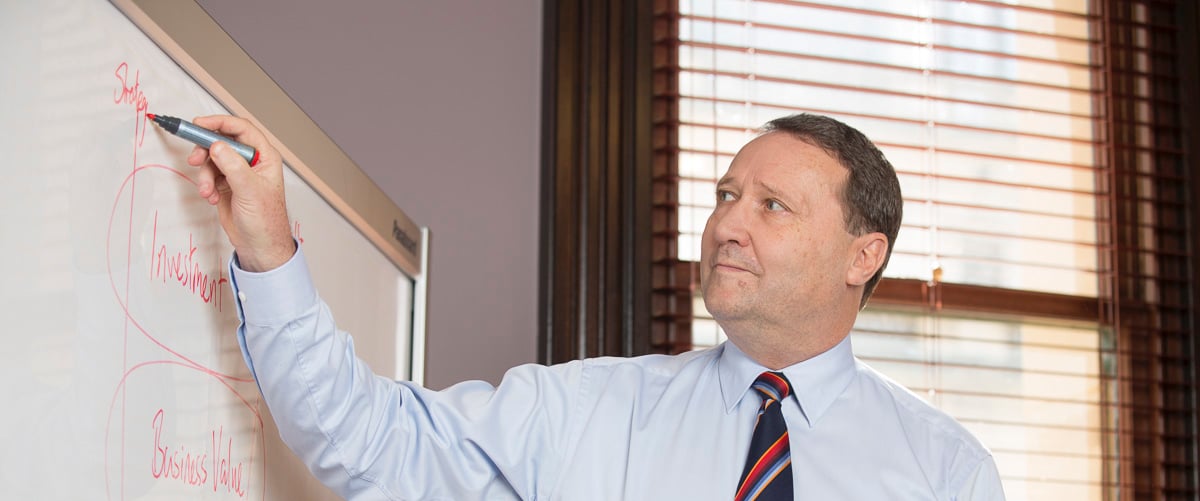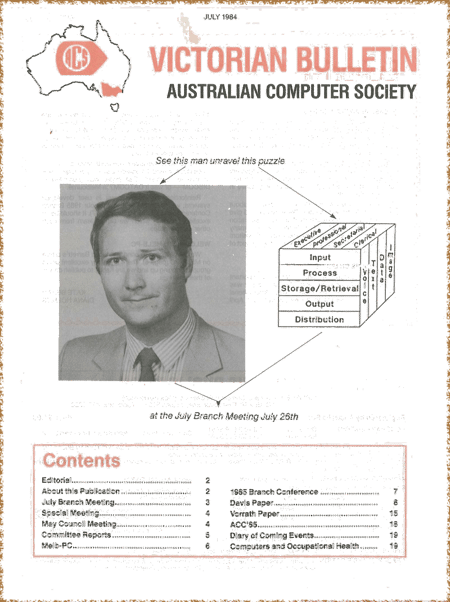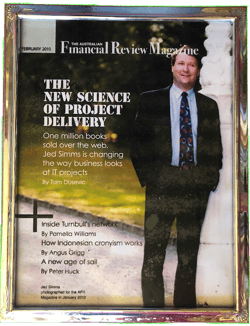
Jed was born in 1950 in the UK in a basement flat at 64 Hova Villas, Hove to parents, Tom and Barbara, and two brothers, Nick and Paul and a half-brother, Roger.
When Jed was nine, the UK Government posted his father to Jamaica, to take on an engineering support role for the British forces. There, Jed attended Jamaica College, and he was one of only two Brits in a school of 850 Jamaican's - an interesting experience.
Jed represented Jamaica and the West Indies at the junior international swimming level. In his final race in Jamaica, aged 12, he defeated the All-American under-14 champion – he left on a high.
Jed returned to the UK to attend boarding school in Brighton - Hove and Sussex Grammar School. Jed held (and will forever do so) the record for the number of consecutive years (five) as school swimming champion, as the school is now a 2-year six-form college.
Jed decided to read Theology at University. He wrote from boarding school to inform his parents of his study plans, and also requested in the same letter that his parents please write back to the school to get him out of going to church on Sundays!
During university holidays, which Jed spent at his father’s various postings overseas, he was roped in to represent the British Navy, Royal Air force and Army at water-polo — without ever being a member of any of these forces. Jed graduated with an Honours degree in Theology (B. Divinity Hons) in the depths of a job-market depression – presenting something of a job-hunting challenge.
He got to “H” in the Graduate Directory of Opportunities before he received any employer interest. Black and Decker, the hand tools people, asked Jed to a group interview; two production engineering graduates, two economics graduates and Jed the theologian, all competing for the same job. Jed got it. He later discovered that he was the unanimous choice of all seventeen B&D managers involved in the selection process.
After six months as the B&D Inter-Company Export Analyst, Jed was promoted to run the nationwide after-sales service and accessories division. Shortly after that, he became the operational improvement guy in B&D’s second-largest factory in the world. From there Jed crossed over into IT as the factory became computerized.
Jed returned to his hometown at Brighton to work for ITT Creed as a Project Manager before migrating to Australia in 1977 with his then wife Eileen and two sons Julian and Austin. A few years later son Rowan arrived to complete the family.
In 1979, Jed branched out on his own, establishing WordPro, his word processing consultancy. He merged this company in 1983 into what is now Accenture, where Jed joined the firm’s core worldwide Office Automation team.Jed also led the local IT Strategy practice and started Accenture on the path to Change Management consulting.
Jed left to become Head of Strategy for the State Bank of Victoria. From there he was headhunted by The Boston Consulting Group to set up their new IT strategy practice and become part of their core worldwide IT Strategy team. While at BCG, Jed led the ground-breaking worldwide research studies which underpinned what became the major focus for his professional life – to help organizations undertake major projects and reap the business investment value.
In 1994, Jed left BCG to branch out on his own, establishing what is now known as Totally Optimized Projects – TOP, to show organizations get the most value out of their projects. In 1995 Alexandra Chapman joined him in this endeavour and became his wife in 1997.
TOP developed over more than two decades, from a concept idea to meticulously thought-out detailed learnable and teachable tools. Harvard Business School recognized TOP as a world thought leader, in 2004 by the Australian Information Industry Association as a leading innovative product, in 2011 by Gartner as one of their ‘Cool Vendors’ considered to be a pioneer on the world stage, and by the US Research Board for its leadership in benefits management thinking.
Jed’s professional mission was to “Transform how the world manages change.”
He never did think small. Jed may not have achieved his goal within his lifetime but believes the use of TOP’s tools, techniques and processes he has left as his legacy will achieve it.”
Four years earlier in 2012, Jed wrote his mission thus: “to transform how the world manages change and to be rewarded and recognized for my work of the past 20 years”.
It is poignant to compare how Jed rewrote the words on that Wednesday morning a few days before his death, fully aware that he was out of time.
Next morning, Jed handed me a USB drive with his most recent updates – with instructions! We were in the middle of major upgrades to almost every aspect of our TOP work. Jed knew that somehow, I would keep going till we got TOP “there”.
Jed and I wrote our mission statements in 2012, encouraged by Bob Phelan (one of our early evangelists) to “eat our own dog food” as they say in the States. We applied our TOP-Thinking processes to TOP and ourselves. We created an Outcomes Path Dependency Roadmap for TOP and personal Desired Outcome for us. That was just after Gartner had recognized TOP as one of its global Cool Vendors in late 2011 and we thought “we have to get serious about getting our work widely adopted”.
That statement of intention still guides what I do today - and slowly, painstakingly - we are getting close to bringing it to reality. Now four years after Jed's death, I can truthfully write the words - we really are, finally, almost "there".
I describe TOP as being “two lifetimes” of work and thinking, and through friends, family, supporters, clients, partners and evangelists around the globe who are spreading the word about TOP, I am certain that we will see the legacy of Jed’s work (and mine) become a part of “the way we do things”. If you would like to help, contact me here. Alex
Jed Simms founded the advisory firm that became Totally Optimized Projects in 1994.
In his prior role, as Asia-Pacific Regional IT Strategist for The Boston Consulting Group, Jed had led the ground-breaking worldwide research into what drives and destroys project value in strategic and operational projects. Through the BCG studies, Jed discovered and quantified the correlation between the maturity of an organization’s capability to direct and manage projects, and its long-term financial returns. It was insights gained from this research that prompted Jed to develop many of the models that now underpin TOP.
Prior to joining BCG, Jed was Head of Strategy, Organization and Planning for a major bank, the State Bank of Victoria, and there he was accountable for all business and IT projects and improvements across the bank. Jed saw first-hand the waste and loss caused by orthodox project delivery methodologies and the lack of clear business direction. Seeking solutions for the bank and finding non – that made sense - Jed decided that there had to be a better way.
Jed’s career was defined by innovation: he implemented flow line manufacturing at Black and Decker UK, introduced the first real-time systems into ITT Europe (in the 1970s), office automation into Australia at T&G Mutual Life Society (in the 1980s), established Change Management as a practice area at Andersen Consulting, became BCG’s thought-leader on business-based IT strategy (in the 1990s), and then through his writings on business strategy value delivery (in the 2000s).
Jed worked in a range of industries including utilities, manufacturing, insurance, banking, telecommunications and services and consulted to many more. Jed also held every type of project-related position — analyst, project manager, sponsor, steering committee member, investment management committee member, PMO Manager CIO and business line manager. It is this experience which frames the very practical perspective, and the entertaining style in his writings on TOP.
Jed wrote extensively; he authored over 30 books and 200 articles and his blog, first published in 1997, has been translated into six languages and republished widely in prestigious journals such as The CEO Magazine and The CIO Magazine.

There are 7.4 billion on the planet. Every day good people die, and they will be missed. So, what makes Jed’s life and death something more significant than just being one out of so many?
Because, I think that in all the billions of the people on the planet there are a few – small in number – who really do have a lasting and widespread influence.
 I made for it for Jeds's birthday in 2005 and it looked forward 5 years to the future in 2010. It says,
I made for it for Jeds's birthday in 2005 and it looked forward 5 years to the future in 2010. It says,
“The new science of project delivery – Jed Simms is changing how the world manages projects
1 million copies sold…"
What kind of a person is willing to stick his head over the parapet and say to the global project fraternity, which Jed used to say behaves precisely like religion,
“Actually Guys – you have got it wrong!”
Jed started his journey in the late ’80s by asking a simple question
“When we have some of the brightest people on the planet working on projects – why are the results so poor? And why btw have they not improved now, in more than 30 years?”
The success stats for projects are not good, and it was clear that a fundamental rethink was needed. That is what Jed and I have been working on for the last three decades.
When Jed & I wrote down what we wanted to achieve with TOP:
Over many years, every time we did client work, we then documented our thinking process and the techniques. Every assignment we did, we taught the staff how to do the work. And we left the team confident to go on and use the tools.
We also had to develop – not just the tools but all the accelerated thinking & learning principles that underpinned them – so that we could teach people to do something in a morning and have it stay sticky.
To give you a sense of the scale of what we were working on with TOP: there is a puzzle Einstein posed which he said that 98% of the population could not solve. But once people learnt the accelerated learning techniques that we built into TOP, they could solve it easily.
And we had to create the models and concepts to show people why project management didn’t matter but why other things did:
So as opposed to the “rape and pillage” consulting practices (as Jed described them), Jed was about “giving people the watch” and teaching them how to tell the time and then how to build new watches when they needed.
TOP is enormously ambitious in scope, scale and impact. We are so close to finishing; by my reckoning, we are 87.75% done.
It’s not easy anyway to do something this big and this global – when you are fighting a religion.
As theologian, Jed loved to play with the religion metaphor. He described the current “orthodox” project methods as “dogma”. We were the “heretics. Our marketing strategy was to collect “evangelists” to help us spread the word. Jed joked we were the “prophets who hath no honour” helping our clients have "epiphanies".
In the middle of trying to do something so big, there were so many trials over the years – not just with the business but also with other things. Some of you know the stories of those trials. I won’t elaborate here except to say that any one of them would be good fodder for a Sixty Minutes feature – and we seemed to have about five of them one after the other.
But Jed never wavered – and neither did I – in believing that we were creating something of value.
“Failure is not an option.”
The challenge of continually reinvesting in the business as well as doing work to fund it – was enormous and enormously tiring. When working on client work – the pace with which we used to work was astonishing. Sometimes the client staff got so tired they sent us away - "come back in a week". Every asset that Jed has is now vested in the business – and the same for me too.
 A sad neglected succulent which sat on the ledge in my office, it died completely leaving only one single shrivelled leaf. With some tender care, that single leaf sprouted roots. It started to grow taller. As the plant grew, it shed a leaf – which created another new plant. This plant symbolised for us what was happening - that we were slowly growing the shoots that would turn into the giant tree and then a forest.
A sad neglected succulent which sat on the ledge in my office, it died completely leaving only one single shrivelled leaf. With some tender care, that single leaf sprouted roots. It started to grow taller. As the plant grew, it shed a leaf – which created another new plant. This plant symbolised for us what was happening - that we were slowly growing the shoots that would turn into the giant tree and then a forest.
2016, in particular, has been full of steps forward and back – my car was written off – but I ended up via insurance money with a better one. Jed’s illness triggered the search for a better accommodation so that he could be nursed through his chemo cycles with better home working space for us to work together, and room for Jed’s boys to stay when they visited from overseas.
There was a clear sense that it was all coming together – and believe me, I know that many of you were (are) sceptical. We had been collecting the team of people who could help us make TOP grow. So many things came to fruition in days, after years of effort. I never doubted that Jed would come through his illness. He had plans!
Some of you know that in 2007, I had a massive crash in Jed’s car on the Calder Freeway (the undercarriage failed and disconnected). What saved my life was a tip I learnt from an advanced driving instructor. In that suspended animation state between when the crash starts and finishes, when all is calm, the voice in my head said,
"Look to where you need to go, and everything will follow”.
The last few weeks, in particular, have had a surreal suspended-time feel. But I also have the feeling that Jed has got the project plan in hand. As Julian, Austin, Rowan and I all worked to get Jed out of the hospital and then to get stuff done after he died, there have been so many weird coincidences and miracles.

On the Thursday morning two days before he died, Jed gave me this USB-chip – and his instructions on my priorities – Value Equation, Project Governance, Strategy Alignment, Business case.
I said to him, “You can’t die – we’re not finished”, and he replied, “I know.”
It was kind of typical of Jed – I used to describe him as the "Martha Stewart" for whom I was the “Omnimedia”, doing everything that he didn’t. We were very well matched intellectually – I used to joke we shared a brain split between two bodies.
So, once the dust settles, I have work to get on with and to do. Now my focus is on getting all the material out into the public domain as fast as possible. We have, amongst other things, a 300+ page book still to be published.
Will we get to the million in book sales? Yes, is the answer.
I would like to thank Jed’s boys Julian Austin and Rowan. They got on planes to get back to Australia to be here with him and worked so hard to make Big Jed’s last few days the best possible, and then got everything organised for today to celebrate his life. Jed was so immensely proud of his boys.
There are other people that I have to thank, and I will do that personally with each of you. I do wish to mention 79 year-old Henny who dropped everything to come over and work 14 hours on the day Jed came out of the hospital to get all ready for his return.
I will continue the work on TOP and unquestionably intend to turn TOP into the new project delivery religion. And to make all those doubters who said we would never create a global movement with TOP, eat their words.
Jed's life work will make a difference.
I hope I have answered the question as to why on a planet of billions
there is only one Jed Simms
which, by the way, a Google search will confirm.
